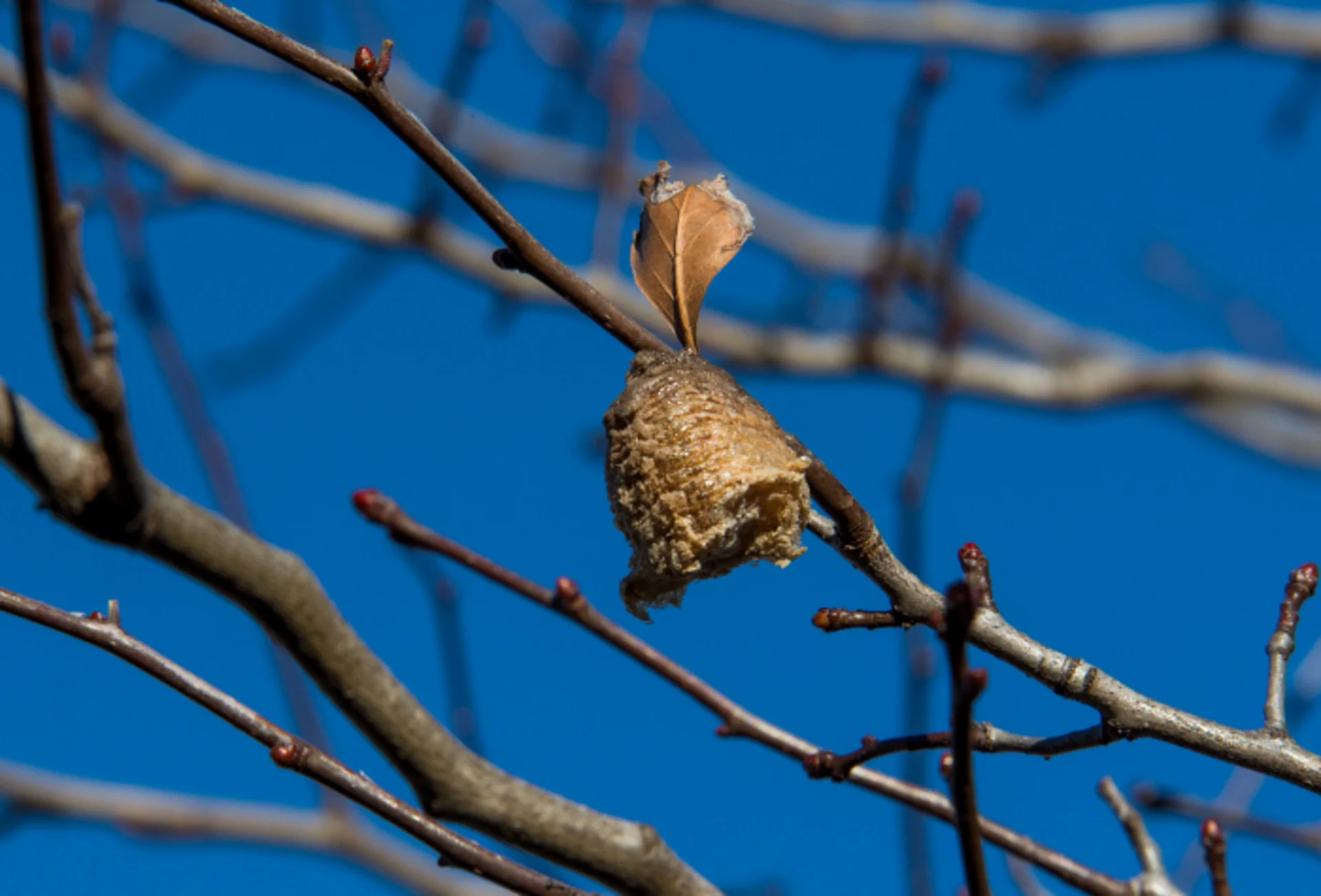
Live Christmas tree? Avoid ones with these brown lumps
Always check your tree for unwanted guests.
For some, nothing beats a real Christmas tree.
It's like bringing a piece of nature indoors - but as we all know, nature can be creepy, crawly, and downright messy.
Last year, federal inspectors found LDD moth egg masses in Christmas trees available for sale at a Thunder Bay, Ont. market, forcing temporary shutdowns imposed by the Canadian Food Inspection Agency, and the removal of about 400 trees, the CBC reports.
If you're a regular visitor to The Weather Network website, you'll know that LDD moths are a matter of concern.
The LDD moth is an invasive species that produce larvae that eat tree leaves, sometimes leaving them incapable of producing new ones. While most trees recover, some struggle - especially if other environmental stressors are present, like drought.
What's in my tree?
LDD moths aren't the only creatures that could be hanging out in your tree.
In 2017, pest control company Safer Brand estimated a real Christmas tree could contain up to 25,000 bugs - everything from beetles, to spiders, to mites.
Your tree could also contain egg sacs, and the warmer indoor climate could 'trick' those sacs into thinking spring has arrived, causing them to hatch.
Always inspect your tree for walnut-sized, egg-shaped masses. At first glance, they may resemble a nut. Upon closer inspection, you may find yourself the unwitting host of a praying mantis egg sac.
It's happened in the U.S., and it's a definite possibility in Canada, with mantises present in parts of B.C., Ontario, and Quebec.
Should you find one (or more) of these sacs on your tree, there's no need to worry. Simply snip them off the branch and place them outside, preferably somewhere safe, like in a shrub.
What to do with non-invasive hitchhikers
The praying mantis is your friend! A voracious eater, these alien-looking creatures act as a natural form of pest control, snapping up insects that come by to eat the plants in your garden.
One sac will contain up to 180 baby mantises, although most won't survive. If they hatch inside your home, it lessens their chance of survival as they'll be on the lookout for food and watch as soon as they emerge.
Before bringing a tree home, experts recommend giving it a thorough inspection. If it shows any signs of an infestation, don't buy it.
Once home, consider leaving it in the garage or some other enclosed space for a few days. Then, shake it before transferring it inside to dislodge bugs and any loose needles that would otherwise end up on your floor.
You can err on the side of caution by spraying the tree with neem oil to deter any remaining bugs.
Thumbnail image courtesy: Larry_Reynolds/Getty Images











